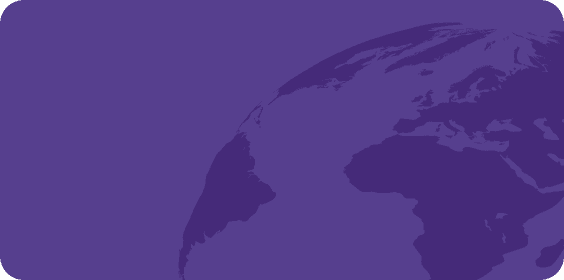
FAQ
ASO vs. PEO: Understanding the differences
When considering a global outsourcing solution for your HR needs, both ASOs and PEOs are great options to help manage time-consuming HR processes so you can focus on more strategic and revenue-generating activities. But each solution provides a unique service model and offering. To help you choose the right HR outsourcing organization, here’s what differentiates the service model and offering of an ASO vs. PEO—and what to consider when looking at these types of solutions for international employment.
A Professional Employer Organization (PEO) is an outsourcing company that provides a wide range of HR services to small and midsize businesses, including payroll, benefits, workers’ compensation and risk management. This type of provider is mainly used in the U.S., although some providers have co-opted the term “international PEO” for Employer of Record (more on that below).
A PEO provides services to organizations through a shared tax ID, a model commonly referred to as “co-employment.” The co-employment model allows organizations to transfer employer responsibilities to the PEO, while continuing to manage the day-to-day activities of their employees.
In the U.S., a PEO is considered the employer of record for tax and insurance purposes, so that if payroll or employment issues arise, they assume some of the risk. But because employer risk is shared, client organizations lose some control over HR policies and benefits.
Since PEOs spread their risk across many clients, they typically offer more affordable and competitive employee benefit programs, like healthcare and retirement, helping smaller organizations scale their business and become more competitive employers.
An Administrative Services Organization (ASO) is a human resource outsourcing company that provides selective HR support and services, such as managed payroll services, corporate benefits and benefits administration.
An ASO can offer guidance with legal questions on compliance, but client organizations will need internal resources to implement and manage human resource recommendations.
The most notable difference between an ASO and PEO is that an ASO does not establish a co-employment relationship, so the client company remains the employer and is liable for all employment-related risk. An ASO will handle tax and insurance filings, but under the client organization’s employer identification number, not a shared tax ID.
Unlike a PEO, an ASO will not sponsor employee benefits programs, like healthcare or workers’ compensation; however, they will help client organizations arrange and secure coverage and will handle the ongoing administration of employee benefits.
Additionally, with an ASO, organizations retain more control over their employee benefits plans without having to manage the tedious details of daily HR administration.
Typically, the ASO model is a valuable solution for large companies with over 100 employees, especially those looking to retain internal HR staff, as the ASO acts as a complementary extension of HR. Organizations who seek to outsource specific HR tasks related to administration while retaining control and flexibility in employee health benefits coverage plans also prefer using an ASO.
On the other hand, PEOs are a better solution for small to midsize businesses who wish to outsource all of their HR needs and lower health plan costs through collective bargaining. PEOs provide comprehensive HR services and expertise, allowing more time for SMBs to focus on their business, attract top talent and worry less about HR risks.
Additionally, organizations who employ internationally and face immense complexity in their hiring and employee management processes, can benefit from a PEO’s HR expertise. A PEO will ensure compliant employment contracts are offered to new hires, for example.
However, organizations looking to outsource HR internationally with a co-employment PEO provider should be aware that some global markets do not accept this outsourcing model.
Even though co-employment is commonplace in the United States, it’s not used in the rest of the world. Co-employment is even considered illegal in some countries, such as France and Switzerland.
In the global context, using a traditional PEO, with its co-employment requirement, would require the client company or organization to establish a registered company, or entity, in the country where employees are located, which can be both costly and time-consuming.
A global employer of record (EOR), however, provides the simplest, most direct way for organizations to grow and manage their international presence. With an EOR, there is no co-employment because workers are fully employed by the provider, and organizations are not required to have a legal entity to hire in-country. When some providers refer to their service as “international PEO” or “global PEO,” they’re usually talking about a global employer of record. Organizations around the world rely on the Safeguard Global Employer of Record (EOR) service to expand and hire in over 170 countries around the world, quickly and compliantly. Review the breakdown below or speak with one of our global solutions advisors to find out if our EOR (Employer of Record) service is right for you.
Employer of Record (EOR)
- Service: Fully manages HR and payroll function, including administration and strategy. Sponsors benefit and workers' compensation. Manages all vendor interaction.
- HR support: Implements and manages all HR recommendations.
- Liability: Assumes all employment risk as the employer of record.
- Cost: Provides a single monthly invoice per employee with no hidden costs.
- Entity requirement: No cost required for entity setup and maintenance.
Administrative Services Organization (ASO)
- Service: Provides limited services. Does not sponsor benefits or workers' compensation. Is not responsible for vendor interaction.
- HR support: Offers legal guidance on compliance issues, but does not implement or manage recommendations.
- Liability: Does not assume any risk, even when HR advice or guidance given.
- Cost: Often charges an hourly fee for complex legal expertise, in addition to ongoing service costs.
- Entity requirement: Entity setup and maintenance costs are required.


Contact us
Global HR services and support wherever you want to grow
Talk to an expert


















